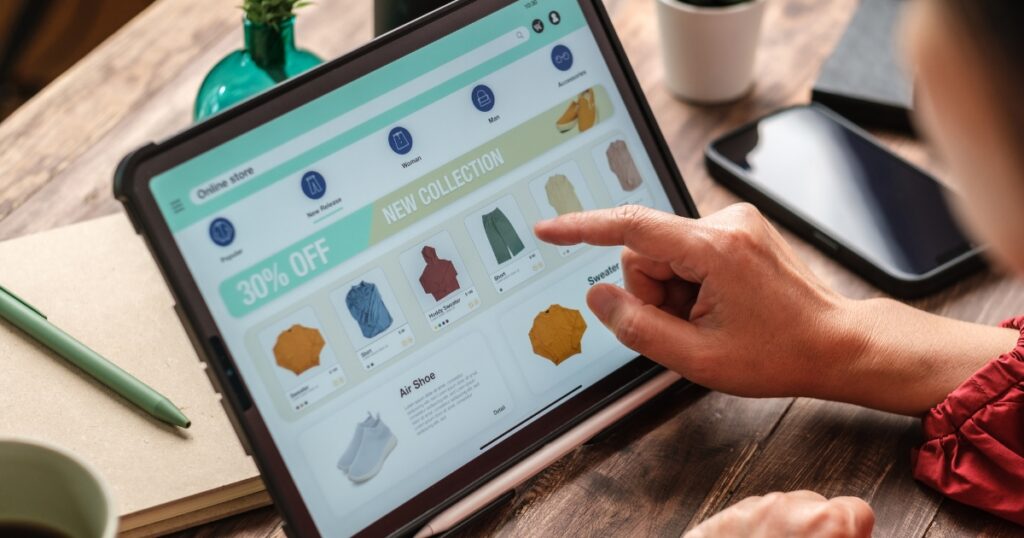The dream of running a business from home is stronger than ever, and one of the hottest ways to do it today is through dropshipping. For new entrepreneurs looking to enter the online business world with minimal risk, dropshipping offers the perfect starting point.
In simple terms, dropshipping is an eCommerce model where you don’t need to keep products in stock. Instead, when a customer makes a purchase, you order the item directly from a supplier, who ships it straight to the customer. This means you can sell products online without worrying about warehousing, packing, or shipping—making it a flexible and affordable way to start a business from your laptop.
Why Dropshipping Is the Go-To Business Model for Beginners
There are several reasons why dropshipping has become one of the most talked-about online business models:
- Low start-up costs – No need to invest thousands in inventory.
- Work from anywhere – Run your store from home, a café, or while travelling.
- Test before you commit – Try out different niches without heavy financial risk.
- Scalable growth – With the right tools and marketing, a small store can grow into a global brand.

Industry data shows just how powerful this model has become. The global dropshipping market is expected to nearly double from $300+ billion in 2023 to $600 billion by 2027, growing at an impressive 23–24% CAGR. This explosive growth proves that not only are consumers comfortable buying from online stores using this model, but also that more entrepreneurs are entering the space every year.
Why It’s Perfect for Home-Based Entrepreneurs
Starting a traditional business often means high rent, staffing costs, and bulk purchasing—barriers that can hold back new entrepreneurs. Dropshipping removes these hurdles, allowing individuals to launch a store with just a few clicks.
It’s an ideal model for:
- Students who want extra income without full-time commitment.
- Stay-at-home parents looking for flexible business opportunities.
- New entrepreneurs who want to test online business ideas before scaling.
And with modern tools like AI-powered marketing, content generation, and ad automation, running a dropshipping business has never been easier.
The Future of Dropshipping – Data & Trends
The future of dropshipping looks promising as both technology and consumer behaviour continue to evolve. With low entry barriers and global scalability, dropshipping is no longer just a side hustle—it has become a mainstream business model that is reshaping the eCommerce landscape.
Global Market Growth of Dropshipping
According to Grand View Research, the global dropshipping market was valued at $301.11 billion in 2023 and is projected to expand at a compound annual growth rate (CAGR) of 23.4% from 2023 to 2030. By the end of the decade, the industry is expected to surpass $1 trillion, making it one of the fastest-growing online business models worldwide.

This growth is driven by:
- Increasing demand for online shopping.
- Wider access to global suppliers and marketplaces.
- Entrepreneurs seeking low-cost, high-flexibility business models.
Popular Niches in Dropshipping
The strength of the dropshipping business model lies in its flexibility. Entrepreneurs can test different niches and pivot quickly based on market demand. Current popular niches include:
- Fashion and Apparel – A consistent leader in dropshipping due to high demand and repeat purchases.
- Beauty and Personal Care – Skincare, wellness, and cosmetics are booming sectors.
- Home Décor and Lifestyle Products – Affordable, aesthetic products for home improvement are gaining traction.
- Electronics and Gadgets – With constant innovation, consumers are always seeking the latest devices.
- Fitness and Health Products – Post-pandemic, global interest in health and fitness has surged.
By monitoring dropshipping trends, entrepreneurs can identify profitable products without committing to large inventories.
Changing Consumer Behaviour
Another reason the future of dropshipping looks strong is shifting consumer expectations. Modern buyers want:
- Faster delivery – Leading suppliers are investing in better logistics to compete with Amazon-like experiences.
- Personalised shopping experiences – AI-driven tools are making it possible for dropshippers to tailor product recommendations.
- Sustainable products – Eco-friendly packaging and sustainable sourcing are increasingly important in the dropshipping business model.
The Role of Technology in Future Dropshipping
Technology will be the backbone of growth in this industry. Artificial Intelligence, machine learning, and automation are making it easier for entrepreneurs to run profitable stores without needing large teams. From AI-powered product research to automated ad generation, the dropshipping model is becoming more efficient and scalable than ever before.

Opportunities and Challenges for Entrepreneurs in Dropshipping
The appeal of dropshipping lies in its promise: low investment, minimal risk, and the chance to run a global online business from home. But like any business model, it comes with both opportunities and challenges. Understanding these factors is essential for entrepreneurs who want to build a sustainable dropshipping business in the future.
Key Opportunities in Dropshipping
- Low Startup Costs
One of the biggest advantages of the dropshipping model is that it doesn’t require large upfront capital. Unlike traditional retail, entrepreneurs don’t need to invest in bulk inventory, warehousing, or logistics. This opens the door for individuals with limited resources to enter the global eCommerce market. - Flexible Business Model
Dropshipping allows entrepreneurs to test multiple niches, run experiments with different product lines, and quickly pivot to meet market demand. This flexibility makes it ideal for new entrepreneurs and home-based businesses looking to find their footing in the digital economy. - Global Reach
With access to suppliers from platforms such as AliExpress, CJ Dropshipping, and Spocket, businesses can sell products to customers worldwide without geographical restrictions. This global scalability is one of the reasons the dropshipping market is projected to surpass $1 trillion by 2030. - Integration with AI and Automation
Entrepreneurs today have access to advanced tools that streamline their operations. From AI-driven product research to automated ad generation, technology is making it easier to run a dropshipping store efficiently. For example, automated content tools can generate product descriptions, ad creatives, and even social media campaigns in minutes.
Challenges in Dropshipping
- High Competition
Because the barriers to entry are low, the dropshipping industry is highly competitive. Many sellers often sell similar products from the same suppliers, making it difficult to stand out. Entrepreneurs must invest in branding, customer experience, and marketing to stay ahead. - Thin Profit Margins
Since products are often sourced from third-party suppliers at competitive rates, profit margins in dropshipping businesses can be lower compared to traditional retail. To succeed, entrepreneurs need to focus on value-added strategies, such as building a brand, offering unique product bundles, or enhancing customer support. - Logistics and Shipping Times
While dropshipping removes the need for inventory, it can introduce challenges in shipping speed and reliability. Customers today expect fast delivery, and suppliers in overseas markets may not always meet those expectations. Choosing reliable suppliers and setting clear customer expectations is key. - Customer Service Limitations
Since the entrepreneur does not control fulfillment directly, handling returns, refunds, and complaints can be tricky. Poor supplier performance can negatively affect the seller’s reputation, so managing customer service effectively becomes a top priority.
The Balancing Act for Entrepreneurs
The future of dropshipping is bright, but success will require more than simply opening an online store. Entrepreneurs need to balance affordability with innovation, competition with branding, and customer expectations with realistic logistics.
Those who integrate AI tools, automate repetitive tasks, and focus on creating a unique brand identity will be better positioned to overcome challenges and build long-term success in the dropshipping business model.
The Role of AI in Shaping the Future of Dropshipping

The rapid growth of dropshipping would not be possible without advancements in technology. Artificial Intelligence (AI) is playing a central role in transforming the dropshipping business model from a simple side hustle into a scalable, data-driven enterprise. For entrepreneurs, this means fewer manual tasks, smarter decision-making, and faster growth opportunities.
AI in Product Research and Trend Analysis
One of the most time-consuming parts of running a dropshipping store is finding the right products. Traditionally, entrepreneurs would spend hours browsing supplier websites and monitoring social media for trends. With AI-powered product research tools, businesses can now identify “winning products” by analysing large sets of data, including search volume, competitor activity, and consumer interest.
This helps entrepreneurs reduce risk by choosing products that already show strong demand, giving them a competitive edge.
AI-Powered Marketing and Advertising
Marketing is where many dropshipping businesses struggle. Creating eye-catching ads, writing engaging captions, and identifying the right target audience requires time, creativity, and often a marketing team. AI tools make this process far more efficient.
For example, AI can:
- Generate ready-to-use ad creatives for platforms like Facebook and Instagram.
- Write compelling product descriptions and captions tailored to customer needs.
- Suggest the best audience segments for ad targeting.
- Optimise ad performance in real time by analysing click-through rates and conversions.
This means even solo entrepreneurs can compete with larger eCommerce brands without needing huge budgets.
AI in Customer Engagement and Personalisation
Consumers expect personalized shopping experiences, and AI makes this possible. By analysing customer data, AI tools can recommend products, customise email campaigns, and even generate dynamic website content. For dropshipping, this translates into higher engagement and stronger customer loyalty—two critical factors in scaling a business.
Automating Content Creation
Content marketing is essential for building trust and driving traffic, but it can be overwhelming for new entrepreneurs. With AI-powered content hubs, dropshippers can generate:
- Blog posts optimised for SEO.
- Product descriptions that highlight unique selling points.
- Bulk social media content for monthly campaigns.
- Short-form videos and images designed to capture attention.
This level of automation means entrepreneurs can focus more on growth strategies while AI handles repetitive creative work.
Why This Matters for Dropshipping Entrepreneurs

The integration of AI into the dropshipping model is not just about saving time—it’s about levelling the playing field. Whether you’re a new entrepreneur working from home or a growing eCommerce brand, AI allows you to scale faster, spend less on resources, and compete in an increasingly crowded market.
Platforms like PlanPost AI bring these capabilities together, offering tools for content generation, ad creation, SEO writing, and visual design—all of which directly support the needs of modern dropshipping businesses.
How PlanPost AI Supports Dropshipping Businesses
Running a dropshipping business sounds simple on the surface, but as we’ve seen, entrepreneurs face challenges like competition, content creation, marketing, and scaling. This is where AI-powered platforms such as PlanPost AI step in to make the process easier, faster, and far more effective.
Here’s how PlanPost AI directly supports dropshipping entrepreneurs:
1. AI Content Hub for Product Descriptions and SEO
Every dropshipping store needs unique and compelling product descriptions to stand out. Instead of copying supplier text, PlanPost AI allows you to generate SEO-friendly product descriptions, blogs, and landing page copy in minutes. This improves both search engine visibility and customer trust.
2. Social Media Content and Bulk Campaigns
Consistency is key in marketing. PlanPost AI lets entrepreneurs create 30+ ready-to-post social media designs and captions in under 5 minutes. Whether you’re launching a new store or scaling a brand, this bulk content generation helps keep your marketing calendar full without extra effort.
3. AI-Powered Ads for Meta Platforms
Meta Ads (Facebook and Instagram) remain crucial for driving sales in dropshipping. PlanPost AI simplifies this by generating:
- Scroll-stopping visuals for ad creatives.
- Engaging captions tailored to your target audience.
- Audience targeting suggestions to maximise ROI.
This takes the guesswork out of advertising, ensuring your campaigns are data-driven and effective.
4. AI Video Generation
Video marketing is becoming essential in the dropshipping model, especially for social platforms like TikTok, Instagram Reels, and YouTube Shorts. With PlanPost AI, you can transform simple prompts into professional, high-converting videos—without needing editing skills or expensive production teams.
5. Image Generation and Creative Testing
Dropshippers often need product photos and ad variations for A/B testing. PlanPost AI’s image generation feature allows you to create fresh variations of visuals quickly, ensuring your campaigns stay creative and competitive.
6. Centralised Workspace for Entrepreneurs
Dropshipping often involves juggling multiple tools, but PlanPost AI’s “My Creations” dashboard keeps all your content—ads, posts, videos, and blogs—in one place. This saves time and makes it easier to track, edit, and reuse your best-performing assets.
By combining these services, PlanPost AI becomes more than just a content generator—it’s a growth partner for dropshipping entrepreneurs. Whether you’re just starting a home-based business or scaling into international markets, these tools allow you to compete with bigger players while saving time and resources.

Predictions for the Next 5–10 Years in Dropshipping
Dropshipping has already reshaped the way people launch and grow eCommerce businesses. But the next decade will bring major transformations driven by technology, consumer behaviour, and global supply chain innovation. Here’s what the future looks like:
1. AI-Driven Personalisation
As Artificial Intelligence becomes more advanced, dropshipping stores will move away from generic storefronts. Instead, websites will dynamically personalise product recommendations, pricing, and marketing messages based on each customer’s browsing and buying habits. A store powered by AI could automatically show different homepages to two visitors, optimising conversions in real time.
2. Faster Logistics with Local Warehousing
One of the biggest criticisms of dropshipping has been long shipping times. In the next 5–10 years, expect a surge in micro-warehousing and regional fulfilment centres. Platforms like Amazon FBA and independent fulfilment networks are already cutting delivery windows from weeks to just a few days. This shift will make dropshipping a far more attractive option for customers demanding speed.
3. AR and VR Shopping Experiences
With the rise of augmented reality (AR) and virtual reality (VR), consumers will no longer have to imagine how a product looks in their home. AR tools will allow shoppers to “place” furniture, clothing, or décor in their environment before clicking buy. For dropshipping businesses, adopting AR-powered product previews will improve trust and reduce return rates.
4. Sustainability and Eco-Friendly Sourcing
Consumers, especially Gen Z, are becoming highly conscious about sustainability. Dropshipping will evolve to prioritise eco-friendly packaging, carbon-neutral shipping, and sustainable product sourcing. Businesses that align with green initiatives will not only win customers but also gain long-term brand loyalty.
5. Niche-Focused Brands Over General Stores
The era of “general product stores” is fading. Future dropshipping businesses will succeed by targeting specific niches—such as fitness gadgets, pet accessories, or home décor—building brand identity and storytelling around their products rather than selling random trending items.
6. Increased Use of AI Tools for Scaling
AI won’t just create content—it will manage operations, optimise ads, analyse data, and even handle customer support through chatbots. Platforms like PlanPost AI are just the beginning. Over the next decade, AI will become the backbone of dropshipping operations, making it possible for a solo entrepreneur to run what looks like a full-scale eCommerce company.
7. Global Market Expansion
With cross-border payments, multi-language AI translation tools, and international logistics, dropshippers will no longer be confined to selling in one country. Entrepreneurs will be able to launch global brands from their laptops, tapping into emerging markets in Asia, Africa, and Latin America where eCommerce adoption is booming.

Conclusion — Building a Future-Ready Dropshipping Business
Dropshipping remains one of the hottest business models for new entrepreneurs and home-based businesses. Its low barrier to entry, scalability, and flexibility make it appealing for anyone looking to start an online venture without huge upfront investment. But as we’ve seen, the industry is evolving fast.
The next decade will reward businesses that:
- Adopt AI-driven tools to personalise, optimise, and automate operations.
- Focus on niche markets to create strong brand loyalty.
- Leverage logistics innovation to provide faster, more reliable delivery.
- Commit to sustainability to align with shifting consumer expectations.
- Expand globally using smart marketing and multilingual capabilities.
For entrepreneurs, the opportunity is bigger than ever—but only if you’re ready to adapt.
That’s where tools like PlanPost AI come in. Whether you’re just starting your first dropshipping store or scaling into new markets, PlanPost AI helps you:
- Generate SEO-optimised product descriptions.
- Create marketing campaigns tailored to your audience.
- Repurpose content across multiple platforms.
- Save hours each week by automating repetitive tasks.
Final Thought
Dropshipping is no longer just about selling products online—it’s about building smarter, more efficient, and future-proof businesses. If you want to ride this wave of change and stay ahead of competitors, now is the time to integrate AI-powered strategies into your eCommerce journey.
Start your next chapter in dropshipping with AI as your partner. 🚀
👉 Get started with PlanPost AI today and future-proof your dropshipping business.
